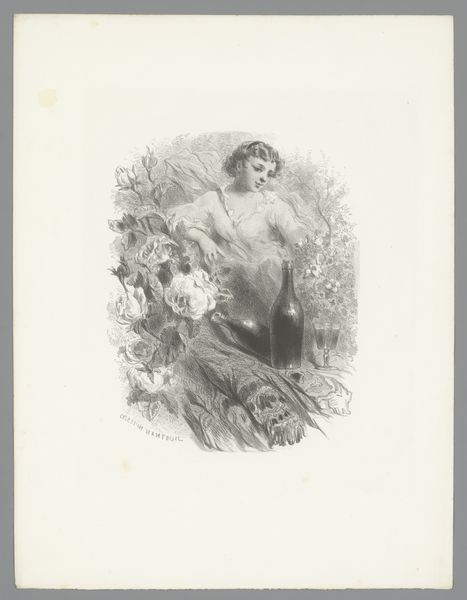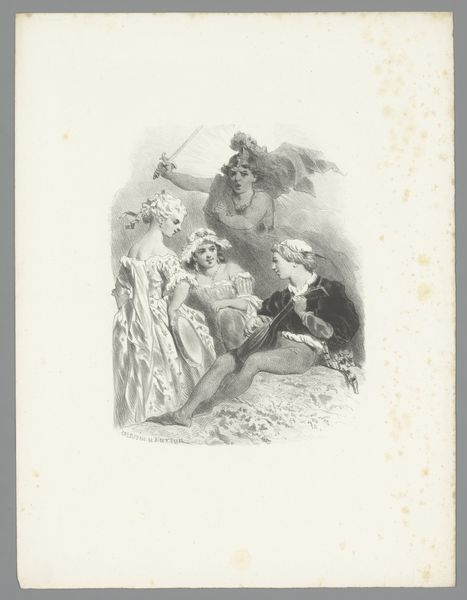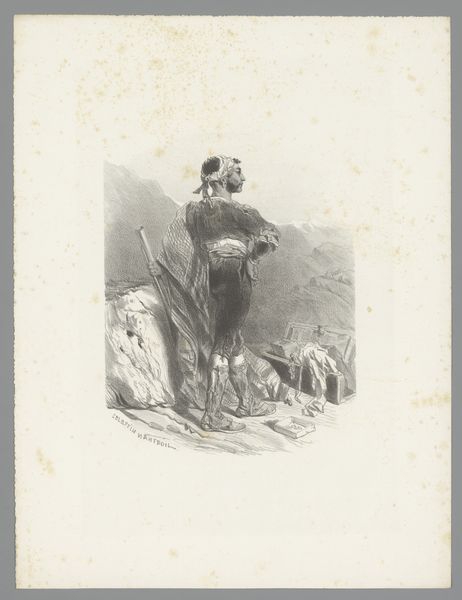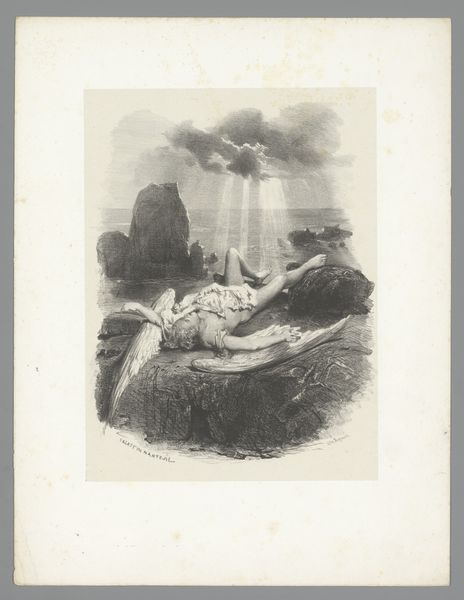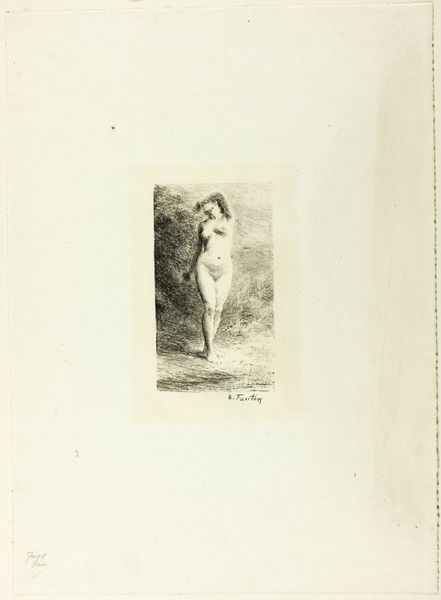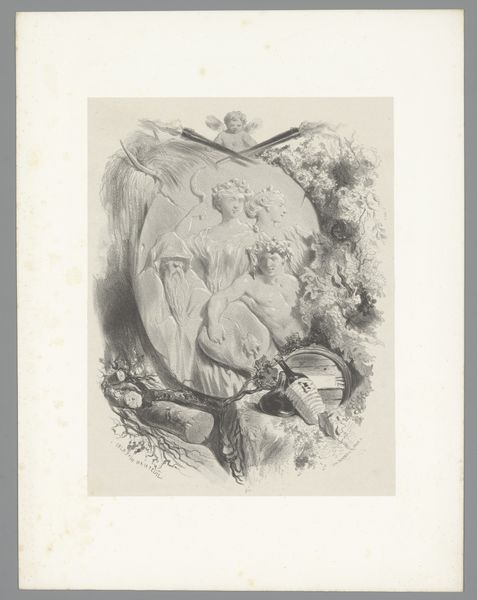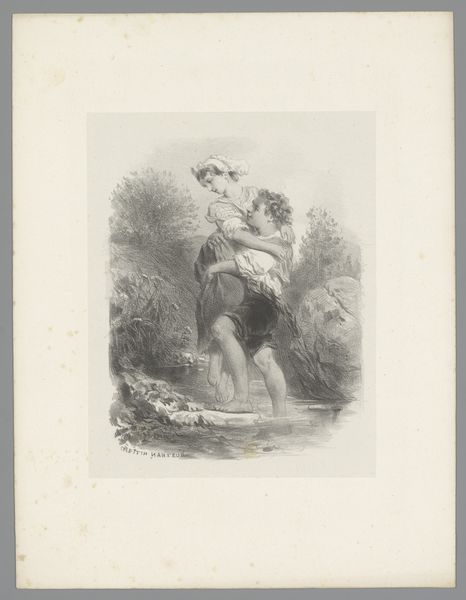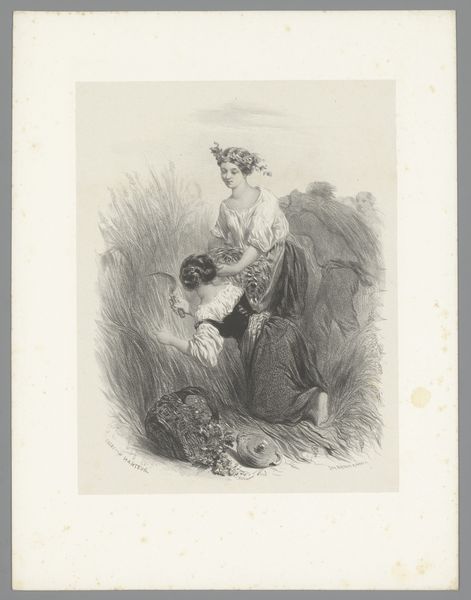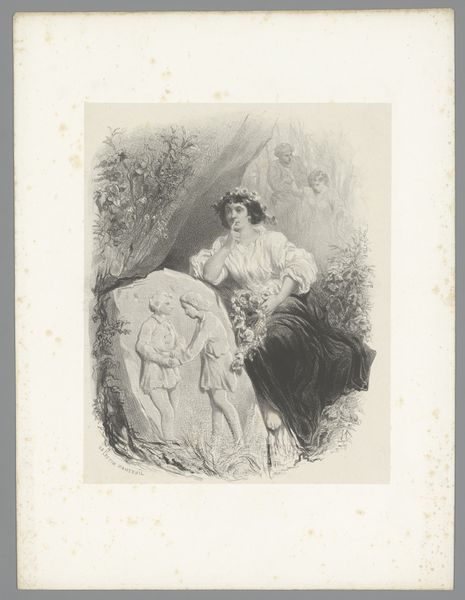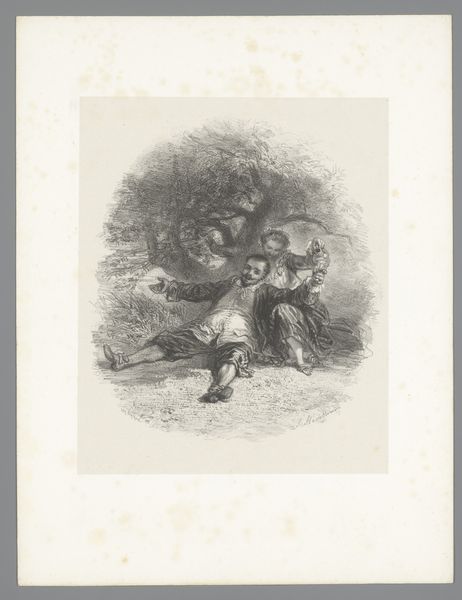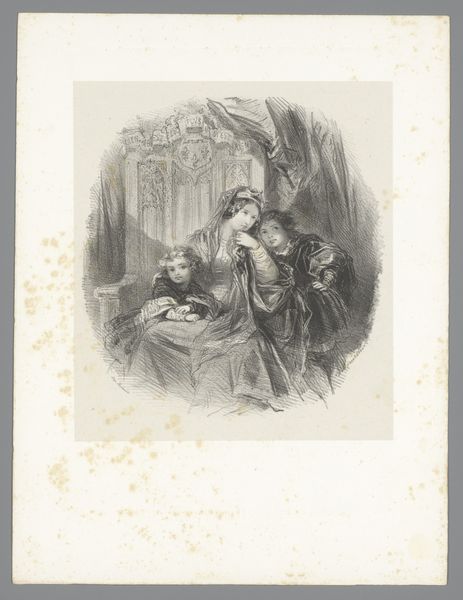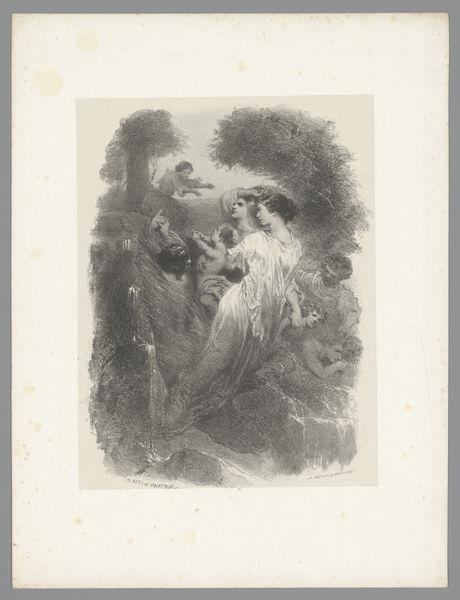
drawing, paper, pencil
#
drawing
#
narrative-art
#
figuration
#
paper
#
romanticism
#
pencil
#
history-painting
Dimensions: height 358 mm, width 273 mm
Copyright: Rijks Museum: Open Domain
Editor: This drawing by Célestin Nanteuil, titled "Blindfolded Man Lying on the Ground Next to a Wall," likely made between 1823 and 1873, has a sombre mood. I'm struck by how vulnerable the figure seems, displayed as he is against that stone wall. What social and political undertones are at play here? Curator: Indeed. Think about Romanticism, the artistic movement of the time. It glorified emotion, individualism, and often highlighted injustice and oppression. How do you think this image would play in public discourse? Consider the history painting theme. Editor: Well, with the blindfold and the stark setting, I would interpret the man’s helplessness as perhaps representing those oppressed by authority, especially in a period marked by revolutions and societal changes. Could it also speak more generally to the fallibility of justice, with him positioned in front of a presumed execution wall? Curator: Precisely! And it makes us ponder about public execution's role during this period. How do these images inform or critique how power was perceived? Did this confront existing perceptions? Did it affect them at all? Editor: It's like the artist invites the viewer to consider the social conditions that create situations like this one... and also how easily power can silence the vulnerable, doesn’t it? I wonder how images like this influenced the abolition movement at that time? Curator: Exactly, considering how widespread drawings like this were and the role of public imagery in building momentum, what implications arise when artistic endeavors intersect social awareness in a certain social and historical climate? This highlights the impact of this image. Editor: I see, I hadn’t thought of this piece in terms of it taking on socio-political conversations! Thank you for highlighting the way it reflects societal debates! Curator: It highlights how artists engaged, questioned, and shaped socio-political realities using readily accessible tools during turbulent periods. Food for thought indeed.
Comments
No comments
Be the first to comment and join the conversation on the ultimate creative platform.
